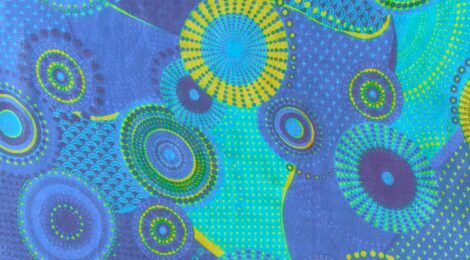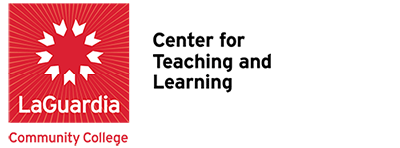
The Wave: A Reflection on Ableism
I had passed the older man in his wheelchair many times on my Jackson Heights street. Someone always accompanied him—a caretaker? A family member? Many of his movements were involuntary, or seemed that way to me while I hurried by, always in a rush to go somewhere, to do something. One time, the man’s companion carefully supported him as he struggled to walk, grasping at the iron fence to pull himself along.
One autumn day, as he sat in his chair, something prompted me to raise my hand to him in a wave. He waved back. Yes, he waved back!
That feeling of connection was so powerful. It was non-verbal. I acknowledged him; he acknowledged me. It was delightful!
Yet I had been so surprised by his wave. Later I realized that reaction stemmed from assumptions I had made about him. For example, I assumed this neighbor who uses a wheelchair would not have been able to perceive, or respond to, a gesture like my wave.
Although I’m thrilled to have made a connection with him, I share this story with some shame since it also demonstrates my own ableism. Ableism is the assumption that those with disabilities, whether physical or mental, visible or invisible, are not able to live a full life, that living with disability/ties means their lives are diminished. However, if you know or are close to a person with disabilities, you know that they live life fully, and that they also tend to be among the most skilled and resourceful people imaginable.
Dismantling Ableism
Like other forms of oppression, ableism is a systemic, culturally-reinforced set of beliefs that exclude people from being viewed as whole and valuable. Systemic oppression exploits characteristics like race, gender, mental or physical abilities, sexuality, or economic status to obstruct people from exercising agency and control over the structures that effect their own lives.
As a facilitator of professional development for faculty and staff, I’ve worked as an ally and advocate to learn from and collaborate with the “disabled” community on and beyond campus. Despite doing this work, my surprise at my neighbor’s reciprocal wave reminded me that I still have so much to learn—and unlearn.
Dismantling ableism, or any type of oppression, is not just the responsibility of individuals, though; it requires broader, systemic changes. Full accessibility requires removing barriers created by ableism. For institutions like LaGuardia, long-term commitment, education, funding, and accountability are necessary if we want to be a truly welcoming space for learning and working, a space where anyone who wants to can feel that they belong.
Looking Back and Moving Forward
LaGuardia is slowly moving in the right direction. For the past few years, faculty interest in how best to work with students who have disabilities has increased. It’s crucial to remember not all students with disabilities are affiliated with the Office of Accessibility. The college’s current Middle States Self-Study articulates accessibility and Universal Design as needs to address, indicating a significant step towards our commitment and willingness to be held accountable. Another major development is Wendy Nicholson’s new role as LaGuardia’s first Executive Director of Diversity, Equity, and Inclusion. Hopefully, we can update her title to become even more inclusive: Executive Director of Diversity, Equity, Accessibility, and Inclusion.
Context: A Bit of History
The movement to build an inclusive, barrier-free world is not new. Activists in the 1960s and 1970s fought hard for the rights of people with disabilities. Because of their work—and their courageous civil disobedience—the Americans with Disabilities Act (ADA) and other legislation mandating accessibility were passed. Articulating the need for respect and self-determination, the disabled activists’ motto was “Nothing about us without us.” Decades later, by directing the 2017–2018 Designing for All (D4A) project funded by CUNY’s Strategic Technology Initiative, I was able to experience the lasting power of that slogan in action at LaGuardia.
While originally intended to provide faculty with skills to make learning materials accessible, our D4A collective of fifteen staff, students, and faculty determine our goal should be broader. We wanted to design LaGuardia as a completely accessible learning environment where all learners and workers feel welcome, a school where everyone can feel that they belong.
Perrsonally and professionally, among the most meaningful learning experiences in my sixteen years at LaGuardia has been my collaboration with students with disabilities and the D4A faculty and staff. Our campus roles of faculty, student, and staff were varied and different. Yet we connected to and learned about each other; we cultivated a feeling of community, of belonging, while creating the D4A projects and recommendations intended to help students feel that they belonged at LaGuardia.
Results: The Designing for All (D4A) Student Survey
As a team, we co-developed and implemented the Designing for All (D4A) Student Survey to learn directly from students about the challenges they faced coming to campus and participating in class. The survey was completed by 564 students, some of whom had used disability services, most of whom had not. Some of our findings were striking, such as the fact that nearly every challenge identified by students as affecting their participation in class (such as instructors’ policies, class structure, amount of classwork, work) was experienced more intensely by students who used disability services. Additionally, more than one in five (21.8%) students who do not use disability services identified “Learning issues (difficulty reading, writing or concentrating)” as a strong factor in their class participation. This finding points to needs of LaGuardia students who do not identify, are not recognized, or choose not to divulge their status as it relates to disability. Whether or not they have a disability, these students must be considered when educators are designing learning materials and activities.
Practical Actions
What are some tangible steps toward a deeper awareness of ableism and a more accessible, welcoming learning and working environment? The powerful introduction to Jay Dolmage’s Academic Ableism: Disability and Higher Education can be a helpful place to start.
If you teach, consider “cripping the curriculum”: i.e., developing course content that is inclusive through the lens of disability. For example, how can we include perspectives that not only address issues faced by people with disabilities, but also acknowledge their contributions to our fields?
In Fall 2, Derek Stadler (Library) and I will lead a three-session Universal Design workshop. For dates and description see the CTL’s Seminars page and, if you are interested, drop me a line by Thursday, December 9, 2021.
An essential part of creating a sense of belonging is acknowledging each other. A wave conveys a transfer of energy, and a recognition. That’s why I encourage you to think about your own neighbor, you know, the one you may avoid looking at while rushing by. Perhaps take the time to say hello, or just to wave?
Who knows, they might wave back.




Thoughtful and touching piece, Priscilla and Thomas. Will make us all better teachers and people. Thanks for this.